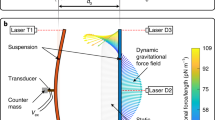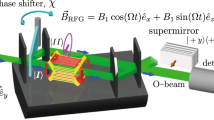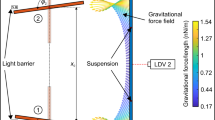Abstract
AFTER the results obtained during the gyro-interaction investigations of 1946 and 1947 1, the Istituto Elettrotecnico Nazionale G. Ferraris of Turin and the Institute of Technical Physics of the University of Naples, in association with the Italian Navy, Air Force, Army, Vatican Radio and R.A.I., carried out during May 12–June 8 a third series of experiments in order to measure the depths of parasitic modulation obtained using a disturbing wave the frequency of which was equal to the local gyro-frequency.
This is a preview of subscription content, access via your institution
Access options
Subscribe to this journal
Receive 51 print issues and online access
$199.00 per year
only $3.90 per issue
Buy this article
- Purchase on Springer Link
- Instant access to full article PDF
Prices may be subject to local taxes which are calculated during checkout
Similar content being viewed by others
References
Alta Frequenza, 15, No. 2, 111 (1946); Nature, 160, 834 (1947).
Phil. Mag., 18, 369 (1934); Nature, 135, 585 (1935).
Author information
Authors and Affiliations
Rights and permissions
About this article
Cite this article
CUTOLO, M., FERRERO, R. Photographic Record and Diagrams of Luxembourg Effect with Resonance (Gyro-Interaction). Nature 163, 58–59 (1949). https://doi.org/10.1038/163058a0
Issue Date:
DOI: https://doi.org/10.1038/163058a0
This article is cited by
-
Resonance in Gyro-Interaction of Radio Waves
Nature (1952)
-
Effects of Radio Gyrointeraction and their Interpretation
Nature (1950)
Comments
By submitting a comment you agree to abide by our Terms and Community Guidelines. If you find something abusive or that does not comply with our terms or guidelines please flag it as inappropriate.



